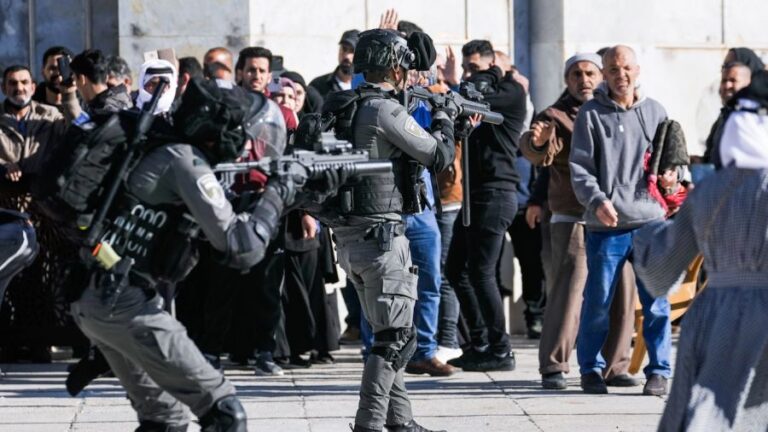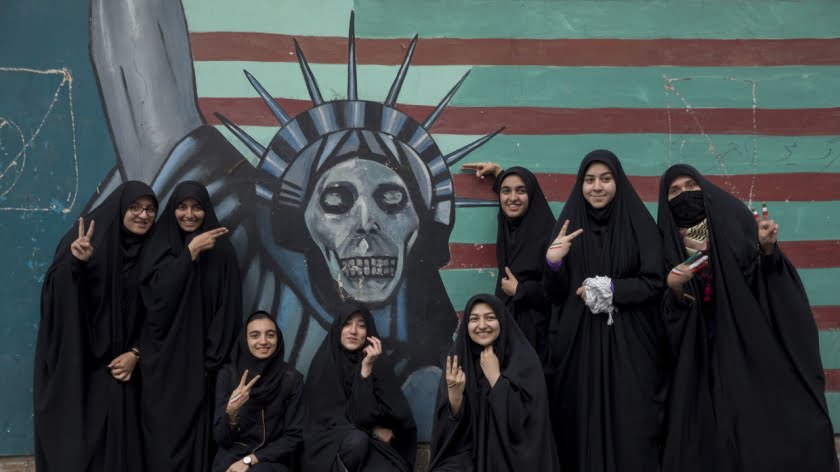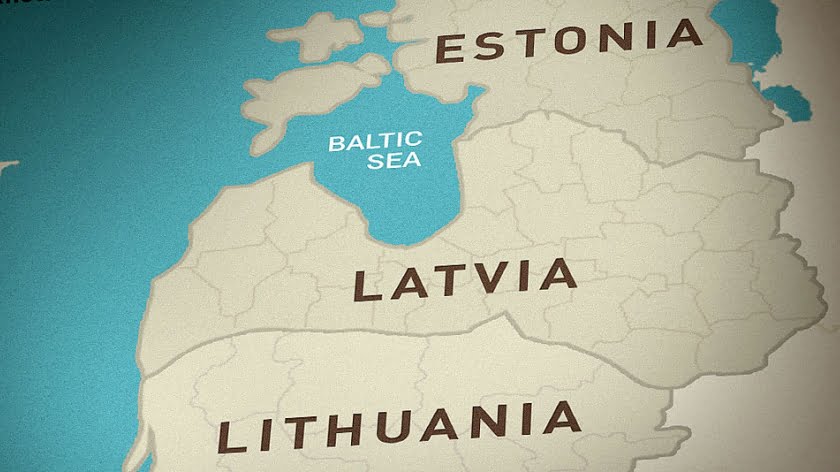Surprise in October, or What We Saw at the Military Parade in Pyongyang
On October 10, 2020, the DPRK held a massive celebration for the 75th anniversary of the Workers’ Party of Korea. It is one of the most important national holidays, and the milestone anniversary was marked by a whole array of mass gatherings, including concerts, gala functions, and a fireworks festival. The highlight of the program was a military parade, and international experts had been “sizing up” this event for a long time, believing that both the content of the parade and the leader’s speech at it would be something like “flagship documents” that determine North Korean policy over the short term.
The reader should recall how talk that in 2020 Kim Jong-un would arrange “something like that” began almost immediately after he mentioned a “new strategic weapon”. And, during the summer of 2020, speculation that new types of weapons would be shown at the military parade started to gush forth, especially since satellite images quite clearly indicated that kind of related activity.
In addition to the vehicles deployed in preparation for the parade, there were reports that in the summer of 2020 North Korea did work revamping a crucial factory that manufactures long-range missile launchers, the so-called “March 16 Factory”.
Generally speaking, Kim Jong-un managed to arrange a splendid, memorable show, where not just the military vehicles drew people’s attention but also with interesting twists in the scenarios, be it the fact that the parade was held during the nighttime, the illuminated airplanes that went along with that, or the filming and photography accomplished using drones or cavalry, which paid tribute to the legacy of the “anti-Japanese guerillas”.
Before the start of the parade, Kim Jong-un gave a speech that was very different from the assumptions made by American and South Korean authors about what the North Korean leader would say. Kim did not mention the United States at all, and then wished South Korea a speedy recovery from the coronavirus, expressing the hope that the day will soon come, after the current pandemic crisis ends, when both Koreas will join hands together.
North Korea presented two new types of ballistic missile during the parade. The first type was a large intercontinental ballistic missile on a 22-wheeled carrier, which apparently runs on liquid fuel (like the Hwasong-15), can theoretically strike the continental United States, and along with that is capable of carrying multiple warheads (either decoy targets or a single nuclear charge with one megaton of power). Harry Kazianis, the Senior Director of Korean Studies at the Center for the National Interest in Washington, stated this is probably the largest rocket on the planet (the transporter for the Hwasong-15 has 18 wheels), and could mean it either has an increased range or could carry a heavier payload.
One should take into account that the presumed flight range for the Hwasong-15 is 13,000 kilometers, which already would let it reach not only the western coast of the United States, but also its eastern coast. The Hwasong-12 flies up to 5,000 kilometers, meaning it could attack Hawaii or Alaska.
According to Koizumi Yu, an associate professor at the Research Center for Advanced Science and Technology at the University of Tokyo, North Korea’s new ICBM is one of the largest in the world, and may have multiple warheads. However, the rocket has not been tested yet, so the focus of attention is on when its first test launch will take place. South Korean experts also reported that the new missile is longer and heavier than the Hwasong-15, and suspect that it may be equipped with a new type of engine – one which the North tested twice in December 2019, stating that these tests would have an important impact on changing the country’s strategic position and strengthening its nuclear deterrence capabilities. The large space under the missile’s payload fairing calls attention to itself: with this design, the ICBM will be able to carry not just one conventional warhead, but either several warheads (increasing the number of targets destroyed, and the chances of overcoming a missile defense system), or one that has a thermonuclear warhead with a capacity of several megatons (this is a completely different level of damage when attacking huge city, entailing up to one million victims), as well as some decoy targets that, once again, increase the chance of bypassing an enemy’s missile defense system.
On the whole, however, experts had different opinions about whether it was a mock-up or not, and if it was not a mock-up then how long it would take to prepare the rocket for launching. Whether it carries one warhead or several of them. Whether it is a vulnerable target (during a combat situation, delivering it to the intended site, raising it to a vertical position, and filling it with fuel and oxidizer all requires time, and it would be very difficult to ensure secrecy during this method of transportation and use).
Something else is more important: it is a way of demonstrating force, since in the time leading up to a war putting this kind of missile on combat alert, after satellite surveillance detects it, would suggest that the DPRK is ready to cross that “red line” – and that perhaps its demands should be taken seriously.
And then it doesn’t even matter that much whether this kind of rocket exists in the form of a mock-up or it is the only one that exists. The system shown during the parade demonstrates the aspirations present, and at least shows in which area of focus development work is being done, and is designed on the principle of “guaranteed deterrence”. And, as Mike Pompeo said at the time when he was still director of the CIA, “we must proceed from the strategy that North Korea has this kind of missile. Sooner or later they will make it, because for them it is similar to the Manhattan Project for the United States back in the time of WWII”.
The United States is often guided by what former Vice President Dick Cheney called the “one-percent doctrine”. In other words, if there is even a one percent chance of some fact, then we have to take it as an absolute certainty in terms of our response. In this context, American strategists cannot neglect the small likelihood that a North Korean missile will reach the US mainland, even if it is one percent, or a fraction of one percent, because if this happens then the consequences of the attack will negate any political gains from the conflict. This means that it doesn’t matter how many missiles like that North Korea has. If there is not a 100% possibility of intercepting them all, Washington should think about how to solve the problem of DPRK using non-coercive methods.
The second type showcased at the parade were the Pukkykson solid-propellant missiles, which included the previously tested Pukkykson-2 along with new missile, the Pukkykson-4: according to South Korean experts, this missile is intended to be deployed at sea, and will be suitable for a new submarine that is being built at the North Korean naval base located at Sinpo, on its east coast. The new submarine is believed to be capable of carrying three or four SLBMs.
It should be noted that missiles of this type that currently exist adequately meet the standards for intermediate-range ballistic missiles: The Pukkykson-2 can theoretically (it is worth reiterating how tests were executed along high-angle trajectories, so recalculations need to be done) fly up to 1,250-1,300 km, and the Pukkykson-3 up to 1,900 km; however, alarmist estimates claim that even the Pukkykson-2 will reach 2,000-3,000 km, and could attack Guam. In addition, it is a two-stage missile, which will allow creating over the longer term a three-stage version capable of operating at a distance up to 5,500 km or more. However, South Korean alarmists believe that even what was shown at the parade has a maximum range of more than 3,000-4,000 km.
More important, however, is that the DPRK possesses a whole range of solid-propellant missiles, which, unlike liquid-propellant missiles, can remain in a fueled and ready-to-strike state – meaning that they can be brought into combat readiness much faster (up to 15 minutes). They could wind up being “second-strike weapons” in situations where a large liquid-fuel missile would be the primary target for an American attack.
And, although the capabilities that the Pukkykson missiles exhibit are still more modest than the Hwasong family, it is believed that this missile can also carry nuclear weapons, and be used to attack US allies (Japan and South Korea), as well as American military bases “on the approach routes in the vicinity”. If an attack were successful, this would “cut down” the enemy’s infrastructure, and deprive it of the unique bonus that the United States has in terms of its ability to quickly transfer large troop contingents from one end of the world to the other.
In addition to the “program’s highlights”, North Korea showed off a diverse family of short-range, quasi-ballistic missiles – ones that we have seen tested over the past few years. There were also new anti-aircraft and anti-ship missiles (approximate equivalents to the Russian S-300 and Tor air defense systems), “super-large-caliber” multiple-launch rocket systems with calibers up to 600 mm (with the designation KN-25 in Western countries).
However, it is worth noting that there has been visible progress made not only with missile systems, but with conventional weapons as well.
This magnificent mass event had two objectives. First, under the current regime involving the emergency anti-epidemic measures, Kim still acted to give the public a holiday. Those who wanted to search for hidden meanings found something else in the holiday: the nighttime show was supposed to demonstrate that the situation with electricity in the country was improving, while the audience’s lack of masks was the proof that the country was successfully fighting COVID-19.
Second, on the eve of the November 3 presidential elections in the United States, and a likely change of course if Biden secures a victory, Pyongyang is once again showing Washington that the DPRK has a military potential that is higher than some hawks can conceive, who still allow for the possibility of a military solution to any potential problem. However, at the same time, Pyongyang is refraining from an aggressive show of force, and believes that the missiles will speak for themselves.
It is clear that the message sent by the parade was taken by many people in different ways, and depending on their political partisanship. In the author’s opinion, on one hand the North is inclined towards dialogue, if it is oriented towards consensus rather than unilateral concessions; on the other hand, the North is clearly demonstrating that forceful methods of influence will be tolerated less and less.
The lack of reaction on the part of the United States is quite telling. John Supple, a spokesman for the US Department of Defense, simply told Yonhap that they knew about the parade, and that “our analysis is ongoing, and we are consulting with our allies in the region”.
Another official, speaking on condition of anonymity, said the United States government “finds it disappointing that North Korea continues to prioritize its weapons development”, but no official statements were issued, either on behalf of the White House or from Donald Trump himself, about the parade.
In any case, one can assume that an October surprise has taken place, although experts from the rightist camp still expect that the moratorium will be violated by the end of this year, and perhaps even before the US presidential elections on November 3, 2020 – but the author will speak about that next time.







